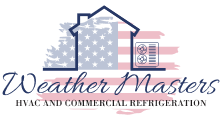When we ask companies about their equipment and techniques, we gain insight into how they maintain quality, efficiency, and consistency. Understanding what tools and methods they use helps us make informed decisions about partnerships, products, and services. Knowing how a company’s equipment and techniques affect its results gives us a clear view of its reliability and performance.
We explore what to consider before asking these questions, the types of equipment companies rely on, and the methods they use to ensure quality control. We also look at how these choices influence business outcomes. This approach helps us see not just what companies use, but why those choices matter.
Key Considerations When Inquiring About Equipment and Techniques
We need to look at how tools and processes fit industry rules, meet quality expectations, and stay reliable through regular care. These factors help us make informed choices that affect safety, performance, and long-term costs.
Understanding Industry-Specific Requirements
Each industry demands different equipment capabilities and techniques. In the manufacturing industry, we often focus on precision, automation, and production speed. In the construction industry, durability, safety, and mobility matter more.
We should ask vendors for detailed specifications that match our work conditions. For example, temperature limits, load capacities, and energy efficiency ratings show whether the equipment can handle daily use.
Key questions to ask:
- What conditions or materials can the equipment handle?
- Does it integrate with our existing systems?
- What training or certifications are required for operation?
When we understand these details, we can avoid costly mismatches between what we buy and what we actually need.
Evaluating Compliance and Quality Standards
Compliance ensures that equipment meets legal and safety rules. We should confirm that all machines follow OSHA, ISO, or local regulatory standards. Proper documentation, such as certificates or inspection reports, supports accountability and reduces risk.
Quality standards define how well equipment performs over time. We can review tolerance levels, testing procedures, and inspection intervals to evaluate quality.
| Standard | Purpose | Industry Example |
|---|---|---|
| ISO 9001 | Quality management | Manufacturing |
| ISO 45001 | Occupational safety | Construction |
| CE Mark | Product safety | Equipment imports |
By checking compliance early, we reduce downtime and legal issues later.
Assessing Preventive Maintenance Practices
Preventive maintenance keeps machines reliable and extends their service life. We should ask about maintenance schedules, replacement parts, and service support before making a purchase.
A clear maintenance plan includes:
- Routine inspections to catch wear early.
- Lubrication and calibration to maintain accuracy.
- Record tracking for repairs and part replacements.
We can also request maintenance logs from suppliers to see how often issues occur. In both manufacturing and construction, consistent upkeep prevents breakdowns that disrupt operations and increase costs.
Types of Equipment Used by Companies
We rely on a wide range of machines and tools to improve efficiency, maintain product quality, and meet safety standards. The type of equipment varies by industry but often includes both standard and specialized tools supported by new technology.
Overview of Common Industrial Equipment
Most companies use industrial equipment that supports daily operations. This includes forklifts, conveyor systems, air compressors, and packaging machines. These tools help move materials, assemble products, and prepare goods for shipping.
In the manufacturing industry, we often use CNC machines, presses, and welding equipment to shape and join materials. These machines improve precision and reduce manual labor.
Routine maintenance tools such as lubrication systems, inspection devices, and safety sensors ensure reliable performance and protect workers. Many facilities also use energy-efficient motors and automation controls to lower costs and reduce waste.
| Equipment Type | Common Use | Industry Example |
|---|---|---|
| Forklifts | Move materials | Warehousing |
| CNC Machines | Shape parts | Manufacturing |
| Air Compressors | Power tools | Construction |
Specialized Machinery in Construction and Manufacturing
The construction industry depends on heavy-duty machines that handle large materials and rough conditions. Excavators, bulldozers, cranes, and concrete mixers perform tasks that manual labor cannot. These machines increase speed and consistency on job sites.
In the manufacturing industry, specialized equipment focuses on precision and product quality. Injection molding machines, laser cutters, and robotic arms allow us to produce complex parts with tight tolerances.
We also use quality control instruments to test strength, durability, and finish. These tools help ensure that every product meets required standards before shipment. Specialized maintenance equipment keeps production lines running with minimal downtime.
Technological Advancements in Equipment
Modern equipment now includes digital controls, sensors, and data tracking systems. These features allow us to monitor performance, predict failures, and adjust processes in real time.
Automation and robotics have reduced repetitive tasks and improved accuracy in both construction and manufacturing. 3D printing and computer-aided design (CAD) tools help create prototypes faster and with less material waste.
We also see growth in electric-powered machinery and smart tools that connect to networks for remote monitoring. These advancements improve safety, energy use, and overall product quality while keeping operations efficient.
Techniques and Methods for Equipment Operation and Quality Control
We rely on precise inspections, consistent monitoring, and structured quality control to maintain reliable equipment performance. We also use data-driven methods to optimize processes, reduce variation, and apply corrective actions when issues arise.
Inspection and Monitoring Techniques
We perform regular inspections to detect wear, misalignment, or contamination before failures occur. Visual checks, vibration analysis, and thermal imaging help us identify early warning signs.
We use sensor-based monitoring systems that track temperature, pressure, and speed in real time. These systems send alerts when readings move outside set limits.
To ensure accuracy, we schedule preventive maintenance based on inspection results. This approach reduces downtime and extends equipment life.
| Technique | Purpose | Frequency |
|---|---|---|
| Visual Inspection | Detect surface damage | Daily |
| Vibration Analysis | Identify imbalance | Weekly |
| Thermal Imaging | Spot overheating | Monthly |
Quality Control Methods and Tools
We apply quality control (QC) to verify that products meet required standards. QC includes sampling, testing, and statistical analysis.
We often use control charts to track process stability. A chart shows if variation stays within control limits. When data points drift, we investigate possible causes.
Our teams follow Six Sigma and Lean Management principles. Six Sigma reduces defects through data analysis, while Lean focuses on removing waste. Together, they improve efficiency and consistency.
We also use checklists and standard operating procedures (SOPs) to ensure uniform testing and documentation. Each step is recorded for traceability and accountability.
Process Optimization and Continuous Improvement Strategies
We focus on process optimization to improve speed, accuracy, and resource use. We analyze workflows to remove unnecessary steps and reduce delays.
Using the DMAIC framework; Define, Measure, Analyze, Improve, Control; we identify root causes and implement targeted improvements. This method supports continuous improvement by repeating the cycle as new data emerges.
We use data dashboards to visualize performance metrics. These tools help us compare current results with targets and recognize patterns that guide future changes.
By combining employee input with performance data, we make informed adjustments that sustain long-term gains in productivity and quality.
Corrective Action and Problem-Solving Approaches
When a defect or failure occurs, we start a corrective action process to prevent recurrence. We document the issue, identify its cause, and verify the fix.
We use structured methods such as root cause analysis and the 5 Whys technique to trace problems to their source. This ensures we solve the real issue, not just the symptom.
Each corrective action includes a follow-up inspection or test to confirm effectiveness. We update procedures and training materials if needed.
This disciplined approach strengthens reliability, reduces rework, and improves overall process control.
Evaluating the Impact of Equipment and Techniques on Business Outcomes
We assess how equipment and techniques affect measurable business results such as cost savings, efficiency, customer satisfaction, and product quality. These factors determine how well a company uses its resources and meets market expectations.
Cost Savings and Efficiency Gains
When we upgrade or standardize equipment, we often see lower maintenance costs and reduced downtime. Modern tools use less energy and require fewer repairs, which helps us manage expenses more effectively.
Automation and digital tracking systems improve workflow by cutting manual steps. This allows teams to complete more tasks in less time. For example, using automated packaging machines can reduce labor hours by up to 30%, depending on production volume.
We can track efficiency gains through clear metrics such as:
| Metric | Before Upgrade | After Upgrade |
|---|---|---|
| Production Time per Unit | 5 min | 3 min |
| Energy Use per Batch | 100 kWh | 70 kWh |
| Maintenance Cost per Month | $5,000 | $3,200 |
These improvements show direct cost savings and better use of resources. Over time, consistent monitoring ensures that new techniques continue to deliver measurable results.
Enhancing Customer Satisfaction and Product Quality
Better equipment often leads to more consistent and higher-quality products. When we use precise machines and updated techniques, we reduce defects and improve reliability. Customers notice this consistency, which strengthens trust and repeat business.
We can measure customer satisfaction by tracking return rates, complaint frequency, and survey scores. A small drop in product defects can raise satisfaction scores significantly.
Improved techniques also let us customize products more easily. For instance, adjustable production tools allow quick changes based on customer feedback. This flexibility helps us meet customer expectations while maintaining quality standards.
By aligning our equipment choices with quality goals, we balance efficiency with customer satisfaction, ensuring both cost control and lasting loyalty.




